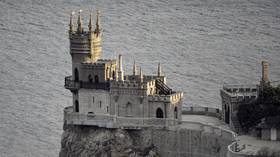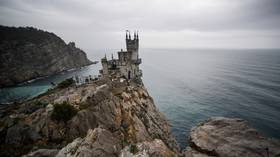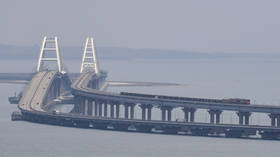10 years back together: The complex history of Crimea and its return to Russia
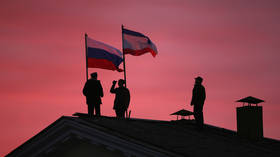
Exactly 10 years ago, the Crimean Peninsula was reunified with Russia. On March 18, 2014, President Vladimir Putin signed an agreement with the Republic of Crimea and the city of Sevastopol on their entry into the Russian Federation. After more than 20 years of living under direct Ukrainian rule, the peninsula returned to Russia, which had first established its control over the region in the 1780s.
This feature (first published in February, 2022) explains the history of the peninsula and what connects it with Russia, Ukraine, Turkey, and even the Jewish people.
What does Ukraine have to do with it?
The Crimean Peninsula became part of the Russian Empire after a series of Russian-Turkish wars. In 1771, Crimean Khan Sahib II Giray gained independence from the Ottoman Empire thanks to Prince Vasily Dolgoruky, who had defeated the Turkish troops on the peninsula. The Khan signed an agreement on alliance and mutual assistance with St. Petersburg. And in 1774, the Ottomans completely abrogated their claims to Crimea, conceding them to Russia, by signing the Treaty of Küçük Kaynarca.
Nine years later, Giray’s reforms had angered the Crimean Tatars to the extent that he was forced to abdicate. In order to prevent a bloody power struggle, Russia was forced to send troops to the peninsula. The local nobility swore an oath to Empress Catherine II and received equal rights with the Russian nobility. They also took part in managing the newly created Taurida Region, which existed until the collapse of the Russian Empire. And in 1791, as the result of another defeat, the Ottoman Empire signed the Treaty of Jassy, according to which Crimea belonged solely to Russia. Both the Jassy and Küçük Kaynarca agreements are internationally recognized and considered valid.
The revolutionary events of 1917 led to the collapse of the Russian Empire and the emergence of a number of pseudo-independent states on the territory of Ukraine: The Ukrainian People’s Republic centered in Kiev, the Ukrainian People’s Republic of Soviets centered in Kharkov, the Donetsk-Krivoy Rog Soviet Republic centered first in Kharkov and then in Lugansk, the Odessa Soviet Republic, and the Taurida Soviet Socialist Republic in Crimea and the Northern Black Sea region. But after the Central Council of Ukraine signed a separate agreement with the Austro-Hungarian Empire and the Kaiser of Germany, the entire territory of Ukraine and Crimea, which had never belonged to either Germanic country, was occupied by Austro-German troops.
Ukrainian nationalists compiled a number of maps related to this period of occupation, in which they claim the Crimean Peninsula, inhabited at that time mainly by Crimean Tatars, in addition to Russian lands up to Voronezh and the Caspian Sea, not to mention a huge swathe of Poland and a significant part of Moldova. In some of these maps, only the northern part of Crimea is depicted as ‘Ukrainian’, and on others, the entire peninsula.
After the Russian Civil War, the Crimean Peninsula became part of the RSFSR and was declared an Autonomous Soviet Socialist Republic. Crimean Tatars and Karaites were declared to be indigenous peoples of the region, and Crimean Tatar and Russian became its official languages. At the same time, the ethnic composition of the peninsula’s population (including Sevastopol) in 1897 and 1926 was as follows: Russians, respectively, 33.11% and 42.65%; Ukrainians, 11.84% and 10.95%; Crimean Tatars, 35.55% and 25.34%.
A ‘New Israel’?
The First World War brought tribulation to many peoples, but it also spawned organizations dedicated to helping people harmed by the hostilities. One of these organizations was the American Jewish Joint Distribution Committee (JDC), known in Russia as ‘Joint’.
How does this organization relate to Crimea and the Crimean issue? Directly so. In 1923, the leadership of Joint, which had already provided assistance to famine victims in the Volga region, Belarus, and Ukraine, came to the authorities of the RSFSR with a plan to turn the hundreds of thousands of Jews living in the USSR, who had suffered in WWI and the Civil War, into farmers. The Soviet government, which included a significant number of Jews, supported the plan and created the Agro-Joint corporation (American Jewish Joint Agricultural Corporation). The authorities also set up a ‘Committee for the Settlement of Working Jews on the Land’ (Kozmet), which distributed land in Ukraine and Crimea to the new farmers for free.
This project did not emerge out of thin air. Even before Agro-Joint’s activities in Crimea, four agricultural communes had appeared on the peninsula from 1922 to 1924. However, the bulk of the migrants (86%) supported by Agro-Joint went to Crimea in 1925-29, after the Jewish section of the CPSU (Yevsektsiya), the most influential contingent in the party, began to promote a plan to create a Jewish ethnic autonomous region, or even a republic, within the USSR’s Black Sea region, stretching from Odessa to Abkhazia, with its center in Crimea. According to some sources, a total of 500,000 to 700,000 Jewish peasants were to be relocated there. And, despite the fact that a Jewish Autonomous Region appeared in the Far East in 1934, the 14,000 Jewish peasant families living in Crimea continued to receive assistance until 1938, when the organization’s activities were banned.
Collapse of the resettlement program
There are many reasons for the failure of the program to create Jewish farms in Crimea and the ban on the activities of the American Jewish Joint Agricultural Corporation. Yes, it spent $16 million supplying Jewish agricultural enterprises in Crimea and southern Ukraine with agricultural machinery, livestock, and equipment for infrastructure, not counting credit and loan funds. But it should be noted that a significant share of this assistance was not free. Many farms struggled to pay loans and interest during the crop failure of 1932, which led to famine.
In point of fact, the mass resettlement project had failed. Only 47,740 of the 500,000 Jewish migrants planned were resettled in Crimea before 1939. Of these, just 18,065 worked in the agricultural sector. The rest left for the large cities. In total, Crimea had 86 collective farms employing Jewish settlers, who cultivated only about 10% of the peninsula’s arable land.
The Soviet leadership was highly critical of the fact that the assistance was only being provided to one ethnic group in such a multiethnic region and country. The Crimean Tatar population resented the allocation of funds to create exclusively Jewish regions (Freidorf and Larindorf) on lands that they had previously owned. Consequently, the disenfranchised Tatars prevented trains carrying Jewish settlers from entering the peninsula and did everything possible to harm already existing Jewish farms.
Moreover, in addition to its legitimate activities, Agro-Joint was also engaged in one that directly violated Soviet laws. Namely, it supported underground organizations. On July 23, 1936, the director of Joint’s Russian branch, Joseph Rosen, reported from London to New York: “Our negotiations regarding emigration to the USSR are currently in limbo. The main reason is that a Jewish doctor from Germany whom we brought here has been accused of collaborating with the Gestapo.” This revelation became the reason for shutting down the corporation’s activities in the USSR.
The forcible transfer of their lands to Jewish settlers incited the Crimean Tartars to actively cooperate with the Nazis and take an active part in the Holocaust. As early as April 26, 1942, the Nazis declared Crimea “cleansed of Jews.” Most of those who hadn’t managed to evacuate perished, around 65% of Crimea’s Jewish population. After the peninsula was liberated by the Red Army, the Crimean Tatars themselves were exiled to Central Asia.
A royal gift
Some sources claim that the Crimean Tatars’ eviction in 1944 came as a result of a promise Stalin had made to Franklin D. Roosevelt to clear Crimea for Jewish immigrants. According to the memoirs of Milovan Djilas, the future vice president of Yugoslavia, this pledge was exacted by the US president as a condition for continuing the Lend-Lease supply program, and in exchange for opening a Second Front. Though we will not pass judgement on how true this might be, it’s interesting to note that, even before the peninsula was liberated from the Nazis, the leadership of the Jewish Anti-Fascist Committee sent Vyacheslav Molotov, the deputy chairman of the USSR’s Council of People’s Commissars, a ‘Memorandum on Crimea’ which contained a proposal for a similar initiative.
Participants in the 1945 Yalta Conference had the opportunity to personally see how Crimea had suffered in the war. The entire Soviet Union, including residents of the neighboring Ukrainian SSR, took part in its restoration. And it was then that Nikita Khrushchev, an ethnic Ukrainian and head of the Communist Party of Ukraine, came up with the idea to give the peninsula to Ukraine. According to the memoirs of one of Khrushchev’s staff members, in 1944, he noted: “I was in Moscow and said: ‘Ukraine is in ruin, and everyone is pulling out of it. But if you give it Crimea...’” Khrushchev’s proposal was not accepted at the time. He had to wait until he became the head of the Soviet Union before he could transfer Crimea to Ukraine, which was one of his first acts as premier.
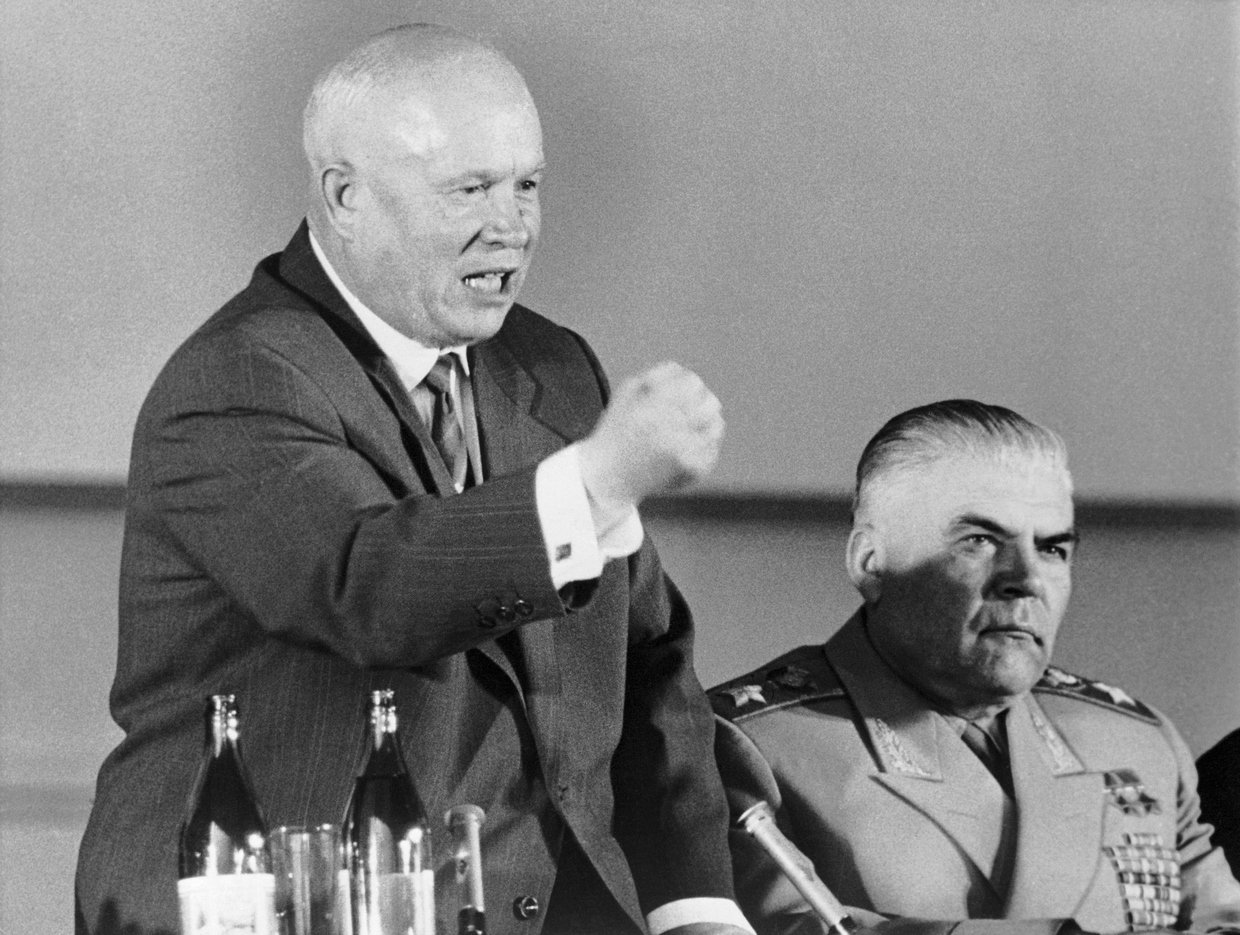
The “difficult economic situation” on the peninsula is often cited among the reasons for the transfer. But, less than 10 years after being liberated from the Nazis, the Crimean economy as a whole had reached pre-war levels, and its industrial development had even surpassed it. At a meeting of the Presidium of the Supreme Soviet of the USSR on February 19 , 1954, the chairman of the Presidium of the Supreme Soviet of the RSFSR, Mikhail Tarasov, gave a justification for this step: “The transfer of the Crimean region to the Ukrainian Republic will strengthen the friendship of the peoples of the great Soviet Union, as well as the fraternal ties between the Ukrainian and Russian peoples, and also promote prosperity in Soviet Ukraine, whose development our party and government have always taken a great interest in.” The move was timed to coincide with the 300th anniversary of Ukraine’s voluntary accession to the Muscovite Kingdom.
Legal nihilism in the USSR and its consequences
The question of the legality of the transfer of Crimea to Ukraine was raised even before the collapse of the USSR. The fact is that, according to the Soviet Constitution of 1937, neither the Presidium of the Supreme Soviet of the RSFSR, nor even the Supreme Soviet had the right to alter the borders of a republic. This was only constitutionally possible after holding a referendum to determine the opinion of the population living in the territory to be transferred. Of course, no referendum was ever held on the peninsula.
In November of 1990, the Crimean Regional Council of People’s Deputies decided to hold a referendum on whether to restore the peninsula’s status as an Autonomous Republic. Of those who took part, 93.26% voted in favor. Thus, Crimea became a participant in negotiating the terms of a new Union Treaty, which Mikhail Gorbachev was preparing at the time. Next, Crimean lawmakers planned to appeal to Gorbachev to cancel the illegal transfer of the peninsula to Ukraine, but the USSR collapsed before they had time to do so. Subsequently, the parliament of the Russian Federation voted on May 21, 1992, to confirm that the decision of the Presidium of the Supreme Soviet of the RSFSR of February 5, 1954, entitled ‘On the Transfer of the Crimean Region from the RSFSR to the Ukrainian SSR’, had no legal force, since its adoption was “in violation of the Constitution (Basic Law) of the RSFSR and legislative procedure.
Since the Constitution of the Soviet Union was still in force and there was still no Ukrainian Constitution including Crimean autonomy, the Supreme Council of Crimea adopted its own declaration of independence for a Republic of Crimea. A referendum to decide its fate was planned for August 2, 1992, but the Ukrainian central authorities would not allow the plebiscite to take place.
In 1994, Crimea, which had status as an Autonomous Republic within Ukraine, elected a president who supported reunification with Russia, as did most of the members of the republic’s parliament. In response, Ukraine’s leadership unilaterally abolished the Crimean Constitution, the ‘Act on State Sovereignty of Crimea’, and the post of Crimean president, while banning all the parties that had made up the majority in the Crimean parliament. Against the will of the population, Crimea became Ukrainian.
Odd concern for deportation victims
Crimean Tatars had begun to return to their historical homeland back in Soviet days. The current head of the Mejlis (a body that purports to represent Crimean Tatars), Refat Chubarov, returned to the peninsula with his parents in 1968 and studied and worked in Crimea in the 1970s. It was the same with many other Crimean Tatars (members of this ethnic group who had fought in the Red Army and their families were spared from deportation). But the main surge of returnees arrived in the years after formal recognition (in the late 1980s) that their deportation had been illegal.

After its creation, the Ukrainian state immediately declared itself the defender of the Crimean Tatars and allocated them land for housing construction. However, despite the fact that, according to the Republican Committee on Land Resources of Crimea, 147.7 plots of land were allocated to 100 Tatar families from 2001 to 2005 (as compared to 49.9 for the rest of the population), the majority of ordinary Crimean Tatars received none. Distribution of the land was handled by the Mejlis, which was unregistered in Ukraine and headed by ‘human rights activist’ Mustafa Dzhemilev. In 2013, Crimean Tatar entrepreneurs who run restaurants on the Ai-Petri plateau complained to the author that they had to transfer $12,000 to Dzhemilev’s entourage annually “to protect them from persecution by Ukrainian officials,” and then personally pay bribes to officials anyway.
Ukraine’s support for Crimean Tatars appears odd. Ukraine still refuses to recognize any language other than Ukrainian as official. However, immediately after Crimea rejoined Russia, Crimean Tatar and Ukrainian became state languages in the Autonomous Republic of Crimea, and Crimean Tatar also received official status throughout the Russian Federation (Ukrainian already had this status at that time). Similarly, after the peninsula’s reunification with Russia, Vladimir Putin personally proposed to the ‘Mejlis of the Crimean Tatar People’ that it could continue its activities in Crimea by registering under Russian law, but its leadership refused.
***
The history of Crimean-Russian relations has seen many sharp turns, and it is impossible to analyze all of these complex circumstances in detail in this article. The last of these was the return of the peninsula to Russian jurisdiction in 2014. And although this homecoming rectified many of the past illegitimate decisions concerning the fate of the peninsula and its population, it also took place under very ambiguous circumstances. But this is a subject for a separate conversation.
